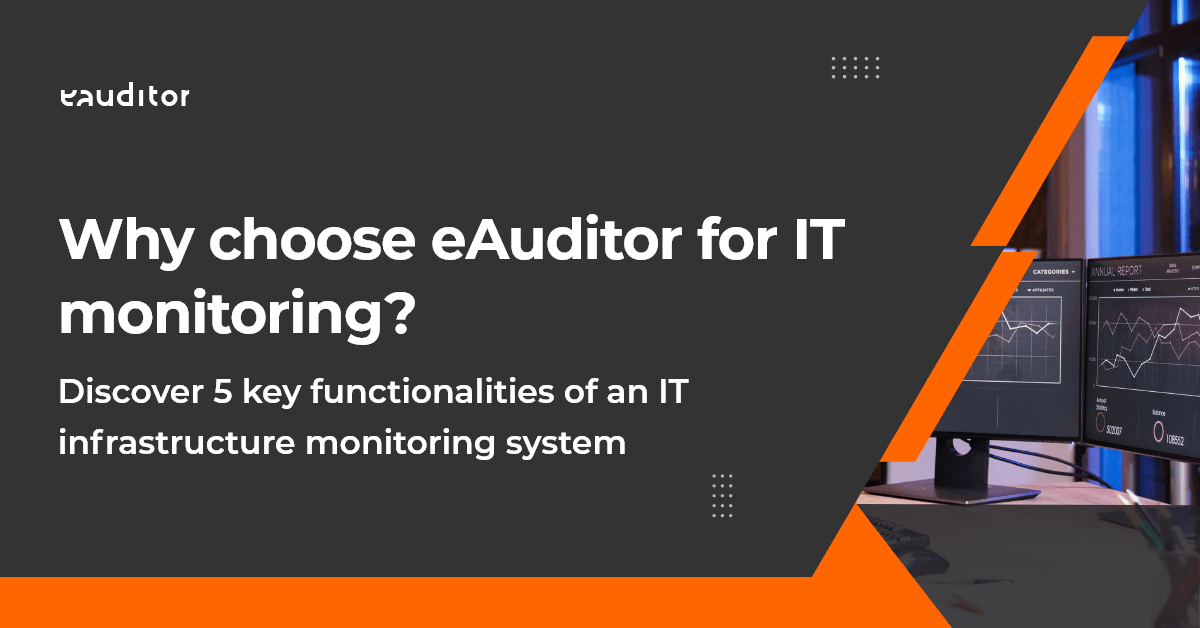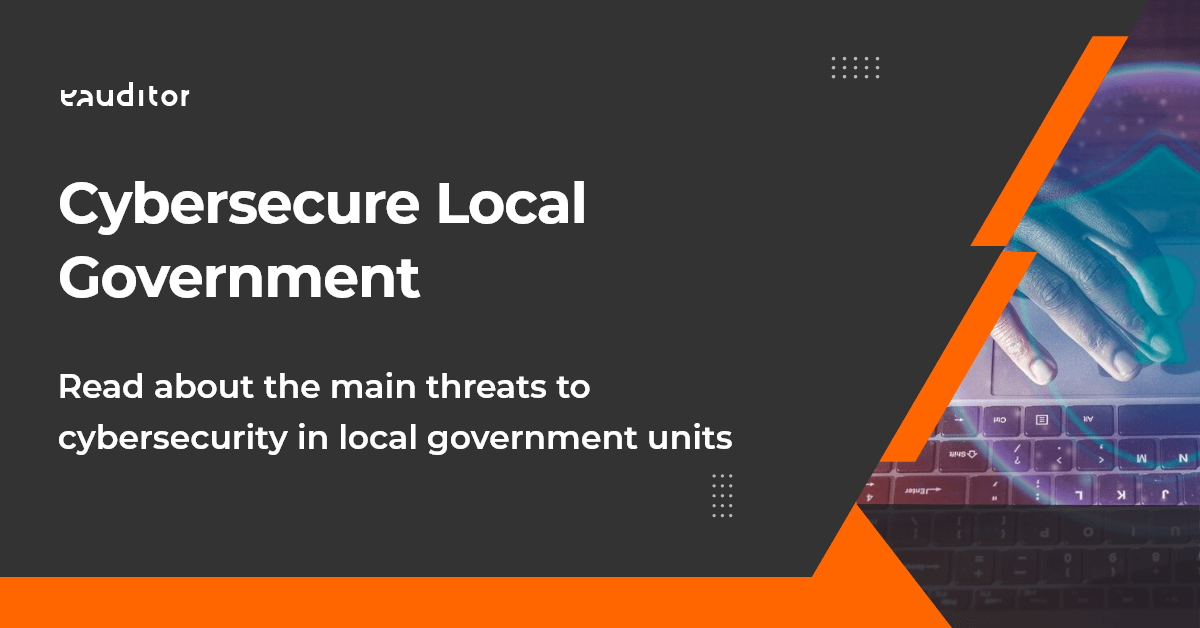How to conduct an analysis of IT security indicators?
Find out how to streamline your security analysis process with eAuditor
IT security indicators
IT security is one of the key aspects that needs attention and constant monitoring. Nowadays, most data is stored electronically, so threats to IT security are increasing. One of the ways to ensure protection is to analyze IT infrastructure indicators, among others, so that the security level of the organization can be monitored and evaluated.
What steps should be taken to conduct an analysis of IT security indicators?
1. Determine the purpose and scope of the analysis
Before proceeding with the analysis, it is worth setting its goals and scope. These should be tailored to the individual needs and characteristics of the entity. Objectives may include, for example, identifying the most important threats to the IT system, assessing the effectiveness of current security measures, or prioritizing preventive actions.
2. Select key indicators
Once the objectives of the analysis have been established, the key IT security indicators to be studied should be selected. These may include, for example:
- the number of IT security incidents over the past year,
- the number of unauthorized attempts to access the IT system,
- the degree of implementation and application of IT security policies,
- the number of updated systems and applications,
- the number of IT security training courses conducted for employees.
3. make an analysis of IT security indicators
Next, we move on to the analysis itself. Data should be collected for each selected indicator so that it can be monitored later. For example, for the number of IT security incidents, you should collect information on the type, causes, frequency and costs associated with their occurrence. Based on this, you can determine which areas need the most attention in terms of security improvements.
4. Draw conclusions
Conclusions and recommendations should be consistent with the objectives of the analysis. Regarding the earlier example – if the analysis showed that most IT security incidents occur as a result of phishing attacks, recommendations could include training for employees on how to recognize such attacks, as well as implementing additional security mechanisms (e.g., email filtering).
It is also worth developing a long-term strategy with regard to IT security, which should be a permanent part of the company’s development strategy. To this end, IT system audits, monitoring of IT security incidents and constant updating of systems and applications can be introduced, among other things.

Analysis of key IT security indicators (SOC)
The eAuditor system allows you to streamline the process of analyzing key SOC security indicators through interactive widgets located in the administrator’s console. They provide a quick and simple view of selected information so that the administrator can immediately react when problems occur in the IT infrastructure. There are 4 types of dashboards in the eAuditor system:
Administrator dashboard
Provides information on the entire monitored environment. Contains more than 200 widgets grouped into 11 categories. Allows easy access to data, so administrators can monitor the status of IT resources in real time and customize dashboards according to their needs. This allows for ongoing monitoring of IT infrastructure for security and performance.
Security Dashboard
Enables monitoring of IT infrastructure indicators directly related to security and allows analysis of detected incidents. It contains data on the operation of operating systems, computers, software, users, networks and hardware. In each of these groups, the administrator has access to detailed information. This allows you to maintain control over your IT resources and raise the level of IT security.
Network Dashboard
This is a graphical representation of the connections between devices on the network and services. The Network dashboard has four statuses indicating the status of the connection between a device and a service: OK (correct) , Free, Disconnected and Unreachable.
My Dashboard
Allows you to create an individual dashboard for each system administrator, facilitating quick access to selected information. Quick creation of your own dashboard is possible thanks to built-in functions on individual views throughout the system.




